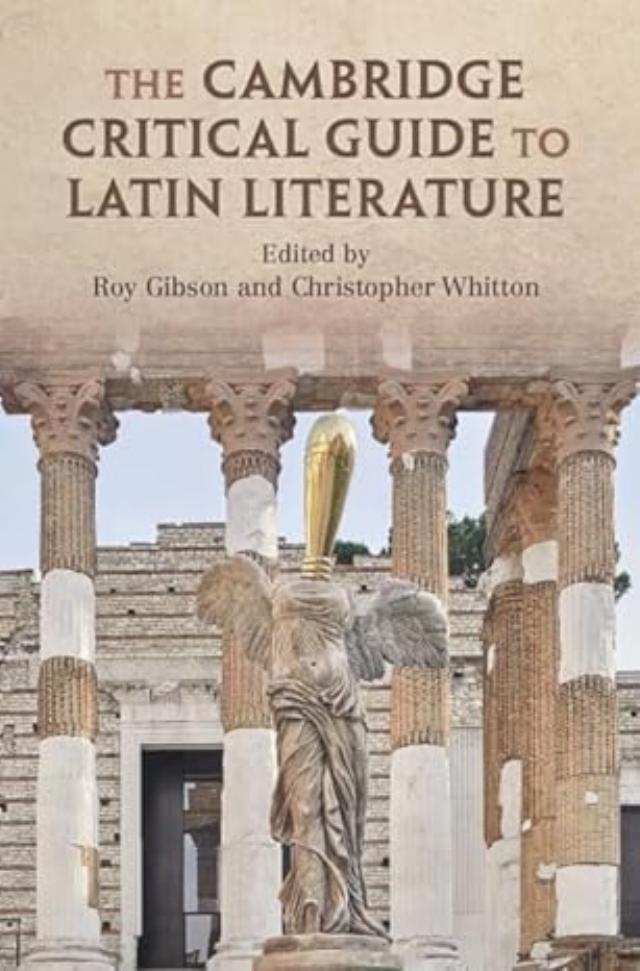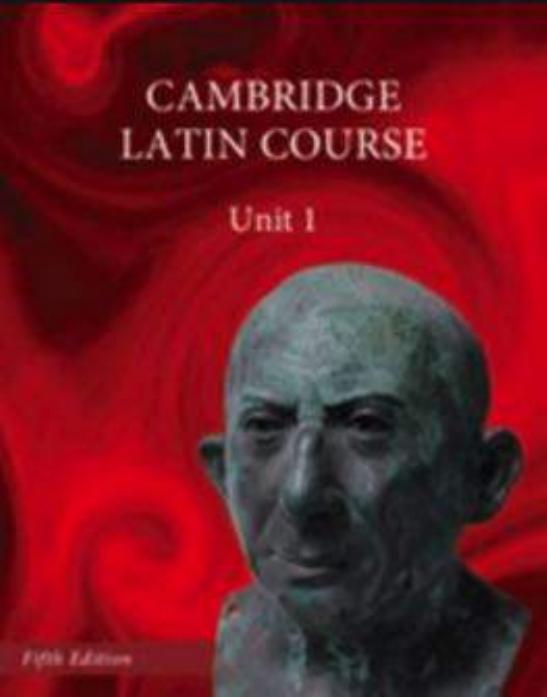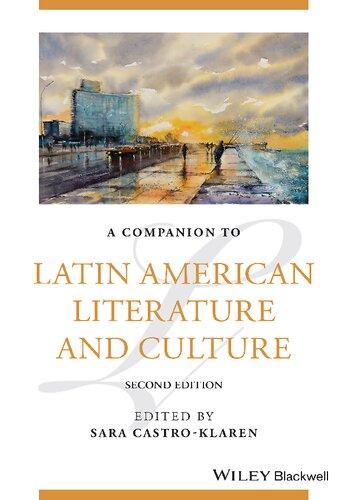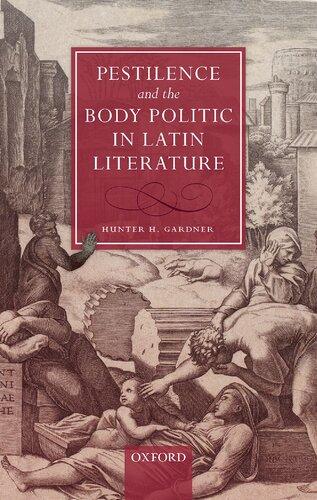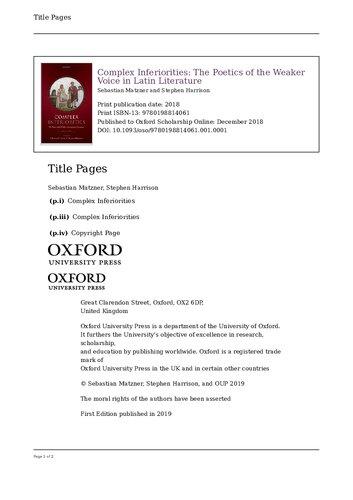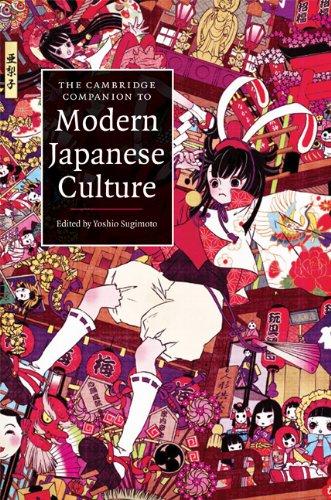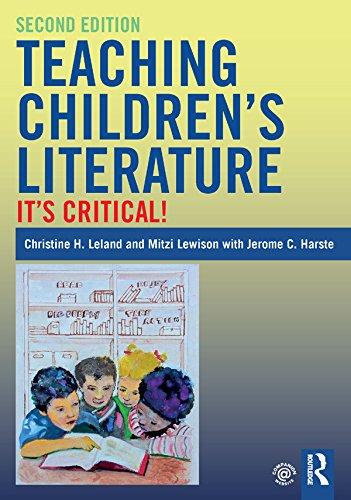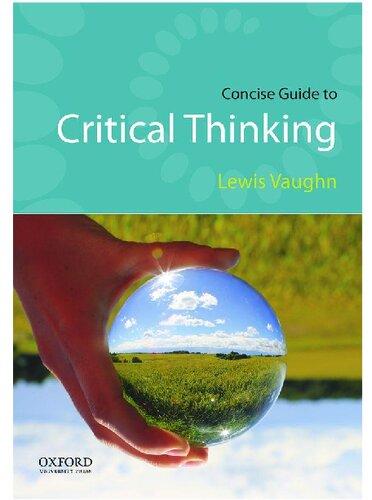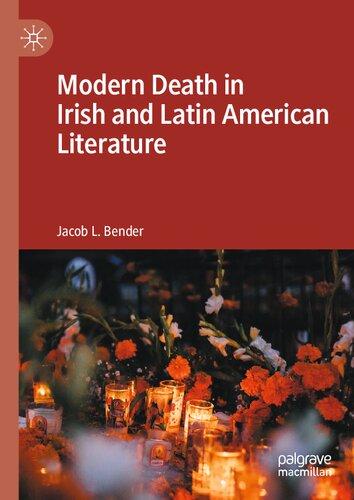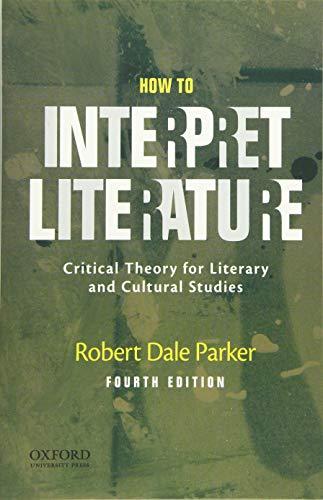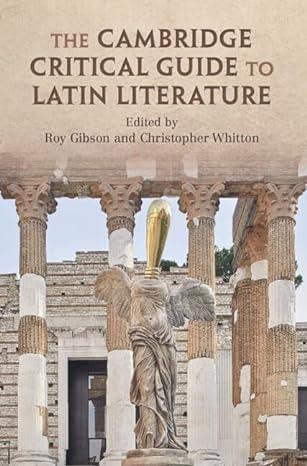FiguresandTables
3.1 LatinLoebs,LatinOxfordClassicalTextsandthe OxfordLatinsyllabus:chronologicalcoverage. page 116
3.2 SelectedhexameterpoetsfromEnniustoPetrarch:word divisionsinthelasttwofeet. 128
10.1 GettysburgAddress:hypotheticalstemma. 527
10.2 ManuscriptsofSuetonius’ DeuitaCaesarum.Stemma. 530
10.3 ManuscriptsofSuetonius’ DeuitaCaesarum.Working stemma. 531
11 1 Semanticmapof Venus 593
12.1 TypographicpresentationofapoembyPublilius OptatianusPorfyrius(Carm. 26) – aspublishedin P.Welser(1595), PubliliiOptatianiPorphyrii panegyricusdictusConstantinoAugusto,Augsburg,p. 5. PhotographbyMichaelSquire. 620
12 2 Manuscriptpresentationofthesamepoem,with Carm 13 above,inCodexPalatinusLatinus 1713 (fol. 10v.;Biblioteca Apostolica,Vatican),ninthcentury.©BibliotecaApostolica Vaticana(Vaticano).
12.3 ManuscriptpresentationofthesamepoeminCodex Bernensis 148 (fascicule 58,fol. 2v.;Bern,Burgerbibliothek), sixteenthcentury.Notethescribalerrorandincorrect correctioninline 8.PhotographbyJohannesWienand.
12.4 ManuscriptpresentationofthesamepoeminCodex Augustaneus 9 Guelferbytanus(fol. 2v.;Wolfenbüttel, HerzogAugustBibliothek),sixteenthcentury.©Herzog AugustBibliothek,Wolfenbüttel.
12.5 Typographicpresentationofan ‘altar’ epigramattributedto Besantinus(Anth.Pal. 15.25).TypesettingbyChristineLuz (reproducedbykindpermission).
621
622
623
628
12.6 Latingraffitointheimageofasnake,fromPompeii iv .5 (CIL iv 1595).
12.7 EarlyHadrianicfuneraryaltarofT.StatiliusAper (displayedintheMuseiCapitolini,Rome).Photo: ReproducedbykindpermissionoftheInstitutfür KlassischeArchäologieundMuseumKlassischer Abgüsse,Ludwig-Maximilians-Universität,Munich.
12.8 PresentationofapoembyPubliliusOptatianusPorfyrius (Carm. 19) – inCodexAugustaneus 9 Guelferbytanus (fol. 4r.;Wolfenbüttel,HerzogAugustBibliothek),sixteenth century.©HerzogAugustBibliothek,Wolfenbüttel.
12.9 ‘Palindromesquare’ inscriptionfromOstia,second century ce .DrawingbyMichaelSquire.
12.10 Selectionoftenname-graffitiintheshapeofships, fromearlyImperialRomeandPompeii.Reproduced bykindpermissionofJaneHeath.
12.11 PresentationofapoembyPubliliusOptatianusPorfyrius (Carm. 3) – inCodexPalatinusLatinus 1713 (fol. 9r.; BibliotecaApostolica,Vatican),ninthcentury.©Biblioteca ApostolicaVaticana(Vaticano).
12 12 GarimaGospelsmsI(AGI,foll. 11r.and 12r.incurrent binding),openingofthe firstandsecondcanontables intheformofaedicules.PhotographbyMichaelGervers, publishedbykindpermissionofJudithMcKenzie. 641
12.13 TheVaticanTerence(BAV,MSVat.lat. 3868)fol. 2r., ninth-centurycopy(c. 825)ofanItalianoriginalofthe fifth century.Photograph:Reproducedbykindpermissionofthe InstitutfürKlassischeArchäologieundMuseumKlassischer Abgüsse,Ludwig-Maximilians-Universität,Munich.
12.14 TheAugustineGospels(Cambridge,CorpusChristi College,ParkerLibrary,ms 286)fol. 125r.,sixth-century codex,probablymadeinItaly.Reproducedbykind permissionoftheInstitutfürKlassischeArchäologie undMuseumKlassischerAbgüsse,Ludwig-MaximiliansUniversität,Munich.
12.15 TheRomanVirgil(BAV,MSVat.lat. 3867)fol. 6r.,late fifthorsixthcentury,probablymadeinItaly.Photo: ReproducedbykindpermissionoftheInstitutfür KlassischeArchäologieundMuseumKlassischerAbgüsse, Ludwig-Maximilians-Universität,Munich.
643
644
645
.16 TheRomanVirgil(BAV,MSVat.lat. 3867)fol. 45r., late fifthorsixthcentury,probablymadeinItaly.Photo: ReproducedbykindpermissionoftheInstitutfür KlassischeArchäologieundMuseumKlassischerAbgüsse, Ludwig-Maximilians-Universität,Munich.
12.17 CodexArcerianus(HerzogAugustBibliothekat Wolfenbüttel,Cod.Guelf. 36.23A)fol. 67v., fifthor sixthcentury,perhapsItalian.©HerzogAugustBibliothek, Wolfenbüttel.
12.18 TheVaticanVirgil(BAV,MSVat.lat. 3225)fol. 71r., perhapsearly fifthcentury,fromRome.Photo:Reproduced bykindpermissionoftheInstitutfürKlassischeArchäologie undMuseumKlassischerAbgüsse,Ludwig-MaximiliansUniversität,Munich.
12.19 Wall-paintingfromtheCasadiSirico(Pompeii vii .1.25), firstcentury ce .Reproducedbykindpermissionofthe InstitutfürKlassischeArchäologieundMuseumfürAbgüsse KlassischerBildwerke,Ludwig-Maximilians-Universität, Munich.
12.20 Obverseof TabulaIliaca 4 N(=Rome,MuseiCapitolini, SaladelleColombe,inv. 83a).PhotographbyMichael Squire,bykindpermissionoftheDirezione,Musei Capitolini,Rome.
12.21 Plastercastofthesametablet(TabulaIliaca 4 N),as housedintheArchäologischesInstitutundSammlungder Gipsabgüsse,Göttingen(inv.A1695).PhotographbyStefan Eckardt,reproducedbykindpermission.
12.22 Diagramshowingthearrangementofscenesinthetwo lateralfriezesof ‘oecush’ intheCasadiOctaviusQuartio (Pompeii ii .2.2).DiagrambyMichaelSquire. 666
12.23 Reconstructiondrawingoftheeastwallofthesame oecus, showingtheHeraclesfriezeabove,andthesmallerIliadic friezebelow.Photographreproducedbykindpermission oftheArchiv,InstitutfürKlassischeArchäologieund MuseumfürAbgüsseKlassischerBildwerke,LudwigMaximilians-Universität,Munich. 667
12.24 Fragmentaryobversesideofthe TabulaIliacaCapitolina (‘CapitolineIliactablet’/TabulaIliaca 1 A:Rome,Musei Capitolini,SaladelleColombe,inv. 316),late first century bce orearly firstcentury ce .Photographby MichaelSquire,reproducedbykindpermissionofthe Direzione,MuseiCapitolini,Rome.
12.25 Reconstructionofthesametabletincompletestate, showingthearrangementofepiccyclicalscenes. ReconstructionbyMichaelSquire.
12.26 EuropamosaicfromtheRomanvillaatLullingstonein Kent,fourthcentury ce .Photographreproducedbykind permissionoftheArchiv,InstitutfürKlassische ArchäologieundMuseumfürAbgüsseKlassischerBildwerke, Ludwig-Maximilians-Universität,Munich. 674
12.27 MarblefuneraryaltarfromRome,MuseoChiaramonti, Vatican.Photographreproducedbykindpermissionofthe Archiv,InstitutfürKlassischeArchäologieundMuseumfür AbgüsseKlassischerBildwerke,Ludwig-MaximiliansUniversität,Munich.
14.1 ‘Tellusrelief’,AraPacis.WithcredittoCraigJack Photographic/AlamyStockPhoto.
14 2 ‘Acanthusfrieze’,AraPacis:detail.Photo:Ralph Liebermann.
Contributors
marybeard isProfessorofClassicsemeritaattheUniversityof Cambridge,andHonoraryFellowofNewnhamCollege.
jamesclackson isProfessorofComparativePhilologyattheUniversity ofCambridge,andFellowofJesusCollege.
jas ´ elsner isSeniorResearchFellow,CorpusChristiCollege,Oxford.
theresefuhrer isProfessorofLatinattheLudwig-MaximiliansUniversität,Munich.
roygibson isProfessorofClassicsattheUniversityofDurham.
simongoldhill isProfessorinGreekLiteratureandCultureatthe UniversityofCambridge,andFellowofKing’sCollege.
yasminhaskell holdstheUNESCOChairinInter-CulturalandInterReligiousRelationsatMonashUniversity.
samuelj.huskey isProfessorofClassicsandLettersattheUniversityof Oklahoma.
roberta.kaster isKennedyFoundationProfessorofLatinLanguage andLiteratureemeritusatPrincetonUniversity.
gavinkelly isProfessorofLatinLiteratureandRomanHistoryatthe UniversityofEdinburgh.
myleslavan isProfessorofAncientHistoryattheUniversityofSt Andrews.
miche ` lelowrie istheAndrewW.MellonDistinguishedService ProfessorofClassicsandtheCollegeattheUniversityofChicago.
donnchao’rourke isSeniorLecturerinClassicsattheUniversityof Edinburgh. xiii
irenepeiranogarrison isPopeProfessoroftheLatinLanguageand LiteratureatHarvardUniversity.
aaronpelttari isSeniorLecturerinClassicsattheUniversityof Edinburgh.
alisonsharrock isHulmeProfessorofLatinattheUniversityof Manchester.
michaelsquire isLaurenceProfessorofClassicalArchaeologyatthe UniversityofCambridge,andFellowofTrinityCollege.
justinstover isSeniorLecturerinClassicsattheUniversityof Edinburgh.
jamesuden isProfessorofClassicalStudiesatBostonUniversity.
katharinavolk isProfessorofClassicsatColumbiaUniversity.
christopherwhitton isProfessorofLatinLiteratureatthe UniversityofCambridge,andFellowofEmmanuelCollege.
Preface
Puttingthisvolumetogetherhasbeenanenjoyabletaskandasmoother processthanisoftenthecase:sixyearsfromcommissioningtopublication counts(it’snicetothink)asarespectableenoughmaturation,evenwithout apandemic;andgrowingpainswereminimalatmost.Hencesinceregratitude toMichaelSharpandtheSyndicsofCUPfortheinvitationtoeditit,tothe sevenanonymousreaderswhocommentedonourprospectus,andtothe nineteenscholarswhoagreedtojoinusintheproject.If,aswehope,you find thechaptersthatfollowstimulatingandvaried,thatisthankstotheintellectualenergyandvervewithwhichthosecontributorsapproachedtheir Herculeantask,writingsubstantial chapterswhosethemesandquestionswe suggested,butwhosecontentsandexecutiontheydetermined.Firstdrafts weresharedaroundthetableataworkshopheldinCambridgeinJune 2018; wethanktheparticipantsbothformakingitaverycongenialandinvigorating occasion,andforthespirit ofcollaborationinwhichtheyproducedandshared furtherdraftsandrespondedtosuggestions.Mostcontributorssubmitted theirchaptersin finalforminlate 2019;ithasnotbeenpossibleforthemto providesystematicbibliographicupdatessincethatdate.
WegratefullyacknowledgethefundingfromtheFacultyofClassicsand EmmanuelCollegeinCambridge,theUniversityofManchesterand CambridgeUniversityPressthatmadetheworkshoppossible.Forhelpwith copyediting,wethankPhoebeGarrett,LauraLositoandJulietWilberforce.
TheimageonthecoverisFrancescoVezzoli’sremarkable Nike Metafisica,inaninstallationonthesiteofancientBrixia(partofamajor 2019 exhibitionattheFondazioneBresciaMusei, Palcosceniciarcheologici: InterventicuratorialidiFrancescoVezzoli).WeareverygratefultoStefano KaradjovandFrancescaMorandinioftheFondazioneBresciaMusei,as wellastoFrancescoVezzolihimself,forpermissiontousetheimage,and forkindlywaivingreproductionfees.
Thisvolumeisdedicatedtoanexemplaryscholarwhodoesandhas donesomuchtohelpusallbecomebetterreaders. xv
Abbreviations
ANRWAufstiegundNiedergangderrömischenWelt,Berlin 1972–.
ASDErasmus.Operaomnia,Amsterdam 1969–.
BTBibliothecaTeubneriana.Leipzig/Stuttgart/Berlin 1849–.
CCSLCorpusChristianorumseriesLatina,Turnhout 1954–.
CHCL
P.E.Easterling,B.Knox,E.J.KenneyandW.V.Clausen, eds., CambridgeHistoryofClassicalLiterature, 2 vols., Cambridge 1982–5.
CILCorpusinscriptionumLatinarum,Berlin 1862–.
CLACodicesLatiniantiquiores,Oxford/Osnabrück/Toronto 1934–92.
CLE
F.BüchelerandE.Lommatzsch, CarminaLatinaepigraphica, 2ndedn,Leipzig 1930.
CSELCorpusscriptorumecclesiasticorumLatinorum,Vienna/ Berlin 1866–.
CTCCatalogustranslationumetcommentariorum,Washington, DC 1960–.
CWE
J.K.McConica,ed., TheCollectedWorksofErasmus, Toronto 1978–.
DLLTheDigitalLatinLibrary(http://digitallatin.org).
DNP
H.CancikandH.Schneider,eds., Brill’sNewPauly (onlineat https://referenceworks.brillonline.com).
DOMLDumbartonOaksMedievalLibrary,Cambridge,MA, 2010 – (onlineat https://referenceworks.http://domedie val.org).
GL H.Keil, GrammaticiLatini, 8 vols.,Leipzig 1855–80.
HLL R.HerzogandP.L.Schmidt,eds., HandbuchderlateinischenLiteraturderAntike,Munich 1989–. xvi
IGInscriptionesGraecae,Berlin 1873–.
IGURInscriptionesGraecaeurbisRomae,Rome 1968–.
ILS H.Dessau,ed., InscriptionesLatinaeselectae, 3 vols.,Berlin 1892–1916.
LCLLoebClassicalLibrary,Cambridge,MA 1912– (onlineat loebclassics.com).
LDLTLibraryofDigitalLatinTexts(publishedonlineby theDLL).
LIMCLexiconiconographicummythologiaeclassicae,Zurich 1981–99 and 2009.
L&SC.T.LewisandC.Short, ALatinDictionary.Founded onAndrews’ EditionofFreud’sLatinDictionary,Oxford 1879.
LSJH.G.Liddell,R.ScottandH.S.Jones, AGreek–EnglishLexicon , 9thednwithrevisedsupplement, Oxford 1996
MGHMonumentaGermaniaehistorica,Berlin 1826– (onlineat www.brepols.net).
OCD5 T.Whitmarsh,ed., TheOxfordClassicalDictionary: ANewDigitalInitiative (oxfordre.com/classics).
OCTOxfordClassicalTexts.
ODNBOxfordDictionaryofNationalBiography.
OLD P.G.W.Glare,ed., TheOxfordLatinDictionary,Oxford 1968–82.With 2ndedn, 2012.
PHerc.PapyriHerculanenses.SeeM.Gigante, Catalogodeipapiri ercolanesi,Naples 1979,andM.Capasso, Manualedi papirologiaercolanese,Lecce 1991. PHIPackardHumanitiesInstitutedatabaseofclassicalLatin texts.
PPM G.PuglieseCaratelli,ed., Pompei:pittureemosaici,Rome 1990–2003.
RE A.Pauly,G.WissowaandW.Kroll,eds., RealEncyclopädiederklassischenAltertumswissenschaft, Stuttgart 1893–1980.
RHTRevued’histoiredestextes.
RIB
R.G.CollingwoodandR.P.Wright,eds., Roman InscriptionsofBritain,Oxford 1965–.
Tab.Vind.A.K.BowmanandJ.D.Thomas, TheVindolanda Writing-Tablets(TabulaeVindolandensesII), London 1994.
TLG
M.C.Pantelia,ed., ThesauruslinguaeGraecae digital library(onlineathttp://stephanus.tlg.uci.edu).
TLLThesauruslinguaeLatinae,Munich 1900– (onlineat https://tll.degruyter.com).
VSDVitaSuetoniiDonatiana (=Suetonius/AeliusDonatus, VitaVergilii).
Introduction
Texts,Tools,Territories
RoyGibsonandChristopherWhitton
ThebookbeforeyouaimstoofferacriticaloverviewofworkonLatin literature.Wherearewe?Howdidwegethere?Wheretonext?Fifteen commissionedchapters,alongwithourintroductionandMaryBeard’ s postscript,approachthesequestionsfrom(wehope)arefreshingrangeof familiarandlessfamiliarangles.Theyaimnottocodifythe field,butto givesnapshotsofthedisciplinefromdifferentperspectives,andtooffer suggestionsandprovocationsforitsfuturedevelopment.Mostbroadly,we hopetostimulatereflectiononhowwe – whoever ‘ we ’ maybe – engage withLatinliterature:whattextsdoweread?Howdowereadthem?
Andwhy?
We’llspareyoupottedsummariesofthechapters.Instead,wedivideour introductionintofourparts.The firstsituatesthis Guide inthe field,and surveystopicsandapproachesadumbratedinit(andsomethatarenot). Thenweelaborateontwospecificthrusts.Oneofthem,signalledmost obviouslybytheinclusionofchaptersonmediaevalLatinandNeo-Latin, isacalltodecentreworkonLatinliteraturefromthe ‘classical’ corpus.The other,relatedtothat,istocontemplatewaysinwhichliteraryscholarship canenrichandbeenrichedbyworkinadjoiningdisciplines:history, linguistics,materialculture,philosophy.Finally,weoffer ‘distantreading’ asacomplementtotheclosereadingthatdefinesthe field.Alongtheway, wedrawoutsomeofthethreadsofthechapterstocome,andsamplesome oftheconversationsrunningacrossthem.
* ThanksareowedtoCatherineConybeare,Jaś Elsner,JoeFarrell,AdamGitner,SanderGoldberg, PeterHeslin,GavinKelly,MylesLavan,CarlosNoreña,IoannisZiogasandespeciallyRevielNetz fortheircommentsondraftsofthischapter,andtoWalterScheidelforsupplyingatranscriptof Scheidel 2020.Noneshouldbepresumedtoagreewiththepositionsoutlinedhere.ThisintroductionfocusesmainlyonissueswithinAnglophoneClassicsandconcentratesonAnglophonepublications;weareonlytooawareofalargenumberofpublicationsinotherlanguagesomittedhere.
A CriticalGuide:Texts,Tools,Theories
Theprovenanceandheftofthis Guide mightinvitecomparisonwiththe Latinvolumeofthe CambridgeHistoryofClassicalLiterature editedby E.J.(Ted)KenneyandWendellClausenin 1982.Inpartthatisapt,and notjustbecauseCambridgeUniversityPresscommissionedthisbookas asuccessor,insomesense,tothatone.Theretoocontributorspooled expertisetosurveythe fieldofLatinliteratureinthelightofrecentwork, freeoftheobligationtocoverbasicinformationandinstructedtobe ‘critical’ (p.xiii).Therearesomesignaldifferencestoo.Mostobviously, oursisnotahistory,1 norareferencebookinthetraditionalsense:2 no pottedbiographiesorbibliographiesforancientauthors,noarrangement bychronologyorgenre,noaspirationto ‘full’ coverage,whateverthat mightmean – thoughwedoinviteyoutojoinusinventuringbeyond (even)lateantiqueLatin,ifyoudon’talready.Hencetootheshiftof emphasisawayfromintroducingandexplicatingprimarytexts,and towardsreflectiononmodesofscholarship.Scholarlyapproacheshave changedquiteabitsincetheLatin CHCL wascommissionedin 1971;3 it won ’tsurpriseyouthat ‘authors’ (inthebiographicalmode)andtheir ‘intentions’ rarelyfeaturehereexcepttobeproblematised,4 norperhaps thattherodofjudgementwieldedsooftenthere – entertaininglybutnot alwaysinspiringly5 – isrejectedinfavourofamoredemocraticsearchfor themerits,notthefailings,ofourtexts.6 Theprofessionhasevolvedtoo,in awayreflectedhere:nogenderparityyet,stilllessracialdiversity,butseven oftheseventeencontributionsareauthoredbywomen;andeachchapterin itswayholdsupamirrortowhatwedo,includingThereseFuhrer’ ssurvey
1 Forwhichwemightalsodirectyouto Conte 1994,thevolumesofthe Handbuchderlateinischen LiteraturderAntike (overseenbyHerzogandSchmidt)andthe OxfordHistoryofClassicalLiterature (ed.DeeClaymanandJosephFarrell)currentlyinpreparation.Onthetraditionofsuchhistories,see PeiranoGarrison(pp. 79–80)andKelly(p. 110).
2 AgenrerapidlygivingwaytoonlineresourcessuchasOxfordBibliographiesOnlineandTheNew Pauly.
3 The fitfulevolutionofthe CHCL isrelated(andsomestringent criticismsarelevelled)by Woodman 1982
4 SeeSharrockin Ch. 4
5 AccordingtoF.R.D.Goodyear,forinstance,Velleius ‘meritsscantesteem’ (p. 641),CurtiusRufus wasan ‘accomplisheddilettante’ (p. 642)andSuetonius ‘possessesnooriginalmind’ (p. 663);not evenTacitusescapesarap(‘Annals 1–6 showasadlackofjudgmentandhistoricalperspective’ , p. 650).Theacidisn’tspecialtoGoodyear: ‘limitationsdisqualifyPersiusfromgreatness’ (Niall Rudd,p. 510);weshouldkeepneglectingValeriusFlaccusandSilius(D.W.T.C.Vessey,p. 558); mostlateantiquepoetryuptoAusoniusformsa ‘discouragingcatalogueofpoetastersandminor versifiers ’ (RobertBrowning,p. 698).It’snoaccident,ofcourse,thatpost-Augustanwritersbearthe bruntofit.
6 Somemightcallthatbland,ofcourse;cf. Barchiesi 2001b,reviewing Taplin 2000: ‘Thedriftofthe entiresurveyisthattherearenobadtextsanymore ’
ofLatinliteraturestudiespastandpresentaroundtheglobe.7 Weaddress abroadaudience:scholarsandstudentsofLatinliterature firstandforemost, ofcourse;butwehopethatthechaptersonlinguistics,materialculture, philosophy,politicalthought,historyandGreekwillbothserveasbridges forLatinistsintotheserelated fields,andencouragetrafficintheopposite directiontoo.Finally,this Guide hasbeenasubstantivelycollaborative venture,encouragedinparticularbyatwo-dayworkshopinJune 2018, where firstdraftswerediscussedaroundatable;cross-referencesarejust themostvisibleconsequenceofthoseformativeexchanges.
Nearerintime,andinsomewaysinmanner,istheBlackwell Companion toLatinLiterature editedbyStephenHarrisonin 2005.Thatisahybridof literaryhistoryand ‘generalreferencebook’ (p. 1),combiningsurveysofthe fieldwiththematicessaysonsuchtopicsas ‘thepassions’ , ‘sexandgender’ and ‘slaveryandclass’ . 8 Perhapsitsmoststrikingfeatureisthecut-offpoint of 200 ce ,reflectingacanonofconvenienceenshrinedinthe OxfordLatin Dictionary andinmanyprogrammesofstudy,butalsoperpetuatingit.The presentvolume,bycontrast,subjectssuchconventionstoconcertedscrutiny – onereasonthatitopenswithIrenePeiranoGarrison’schapteron canonsandGavinKellyonperiodisation(andwewillhavemoretosay aboutthe OLD inamoment).AndourtopicisnotsomuchLatinliterature ‘itself’ (texts,history,genres,themes)asonhowwereadit:acriticalguidein themaximalsense.Perhapsthenearestcomparandum,orsowewouldlike tothink,istheseries RomanLiteratureanditsContexts editedbyDenis FeeneyandStephenHinds;9 likethosebooks,theessayshereareaboveall ideas-driven,notanencyclopaedicgatheringofdata;liketheirauthors,our contributorshavebeenencouragedtobeopinionated,toadoptandaddress differentmethodologies,andtospeakinwhatevervoicetheysee fit.The avowedsubjectivityisprogrammatic,aswetrytocritiqueoratleastreflect ontheideologicalunderlayofwhatwedo,aswellasdoingit.
Thevolumeisthereforebydefinitionpartial.Wehaveaimedfor asuitablespread,andyouwillencounterLatinauthorsfromLivius Andronicusinthethirdcentury bce toGiovanniPascoliattheturnof
7 ThefactthatFuhreristheonlycontributornotinpostintheEnglish-speakingworldis,weassure you,accident.Twoothers(IrenePeiranoGarrisonandKatharinaVolk)areamongthemany continentalEuropeanLatinistswhohavecrossedtheAtlantic.ThankstoYasminHaskell,ourcastlistisnotentirelyconfinedtoEuropeandtheUSA.
8 Includingthreechaptersbycontributorstothepresentvolume.Theeditedcollectionof Taplin 2000 isahybridofadifferentkind,offering ‘anewperspective’ onLatinliteraturethrougheight (excellent)interpretativeessays,runningfrom ‘thebeginnings’ to ‘theendoftheclassicalera’ .
9 Foraprovocativecritiqueofthatseries,see Gunderson 2020: 208–14,in ‘acomi-tragicretelling’ ofits evolution.
thetwentieth ce ,but,torepeat,wedonotaspiretocompleteoreven coverage;totakeanextremecase,ErasmusDarwin’ s TheLovesofPlants (1789)hasendedupwithseveralpages,10 PlinytheElder’ s NaturalHistory none. 11 It’strue,the ‘classicalLatin’ ofthe firstcenturies bce and ce isacentre ofgravity;JamesClackson,forinstance,makesCatullusa filrouge forhis chapteronlinguistics,andthe Aeneid getssustainedtreatmentbyDonncha O’RourkeandAaronPelttarionintertextuality,MichaelSquireandJaś Elsner onecphrasisandMichèleLowrieonpoliticalthought.12 Suchemphasesreflect inpartinheritedcanons,inparttheexpertiseofmanyofourcontributors(and ofmostLatinistsinuniversityposts).Butthiscentreofgravityisalsodeliberatelydestabilised,bothinternally,byPeiranoGarrison’sopeningreflectionson marginality(pp. 52–9),andchronologically,bythethreechaptersthatfocuson post-antiquematerial(mediaevalLatin,Neo-Latinandreception)andbythe routineinclusionoflateantiquematerialinothers.
Inthesamespirit,letusclarifythatthe ‘Latinliterature’ ofourtitleisaterm ofconvenience,andintendedinclusively.Latinisonlyoneoftwoormore languagesspokenbymostofitsauthors,whetherancientormodern;from acultural–historicalpointofview, ‘Romanliterature’ mightthereforebe abettertermforancienttexts – thoughnotformuchpost-antiqueLatin.13 (Ofcoursethatisonlythetipofanicebergaboutlanguage,identityandabove alltheGraeco-Latin ‘culturalhybridity’ centraltoSimonGoldhill’schapter andrecurrentelsewhere.)14 And ‘literature’ issimplyapracticalchoice: Critical GuidetoLatin mightsuggestabook onlinguistics; CriticalGuidetoLatin Studies seemedobscure.Itisnot,therefore,restrictive:ifformanypeople ‘literature’ oncemeanthighpoetryaboveall,15 tastestendnowtothecatholic,
10 Uden(pp. 433–9),exemplifyingtheroleofclassicalreceptioninmodernscientificthought.
11 Thatisnoreflectionofthelivelystateofthescholarship,anymorethantheabsenceofSeneca’ s Natural Questions is.On QNat. seenotably Williams 2012 andthetranslationof Hine 2010;on HN Beagon 1992 and 2005, Carey 2003 and Murphy 2004 remainimportant(seealso Bispham,RoweandMatthews 2007; GibsonandMorello 2011); Doody 2010 and Fane-Saunders 2016 aresignificantstudiesofitsreception.
12 O’RourkeandPelttari(pp. 211–22);SquireandElsner(pp. 658–65);Lowrie(pp. 795–804).Seealso inter alios Uden(pp. 422–7)onpoeticreceptionsofEclogue 2 byAnnaLetitiaBarbauldintheeighteenth century,andFuhrer(pp. 499–501)onthe ‘Harvard’ and ‘European’ schoolsinthetwentieth.
13 Cf.PeiranoGarrison(pp. 80–2).Evenbeforethen,themarker ‘Roman’ hasitsownproblems,of course(Lavan 2020).
14 E.g.O’RourkeandPelttariontranslationsofGreek(pp. 222–9),ClacksononGreekandLatin metre(pp. 578–82)andVolkontheRomanisingofGreekphilosophy(pp. 705–17).AsGoldhill (p. 870)putsit, ‘wecannotrelyonapolarisedoppositionofGreeceandRomeasdiscretecultural entities’.WemightcomparetherollingprocessofexchangebetweenLatinandthevernacularin mediaevalLatinandNeo-Latin(Stover,p. 290 and passim;Haskell,pp. 359–63),aswemight compareGreek/Latinbilingualpoems(SquireandElsner,p. 635;Goldhill,pp. 890–1)with mediaevalandRenaissancemacaronictexts(Stover,pp. 310–11, 314–15;Haskell,pp. 345–7).
15 PeiranoGarrison(p. 82).
andourowntenoristoencourageopen-mindedness.SanderGoldbergoffers aworkingdefinition: ‘textsmarkedwithacertainsocialstatus,whose “literary ” qualitydenotesnotsimplyaninherentaestheticvaluebutavalue accordedthemandtheworktheydobythesocietythatreceivesthem’ . 16 Thatinvitesawholeseriesofquestionsaboutcanonformation,elitismand more,butisalsousefullyopen,allowingthecasetobemadethat ‘technical’ writings,forinstance,shouldbecalledliterature17 – or,moretothepoint,that theymerit reading withthesortsoftoolsandapproachestypicallybroughtto bearonit.Fromanotherperspective,theterm ‘literarytexts’ iscommonly usedtodenotetextswhichhavecometousthroughthemanuscripttradition, asdistinguishedfromthosewrittenonstone,bronze,plaster,papyrusor wood.18 But,asMylesLavanargues,theselattertypesmayrespondvery productivelyto ‘literary’ analysis(asshownbyworkonthe Resgestae,that greatexceptiontotherule);atthesametime,literaryscholarsstandtogain agreatdealfromincorporatingsuchmaterialintotheirreadingof ‘literary’ texts – toenrichoursenseofculturalcontext,forinstance,andtoprofitfrom opportunitiestolookbeyondtheliteraryelite.19 MediaevalLatinoffers asalutaryperspective,asJustinStoverremarks,andthesameistrueofNeoLatin:comparedwiththeirvastcorpora,nodefinition,howevergenerous, couldbesaidtomakeancientLatinliteratureanunmanageablylarge field.20
Aswithtexts,sothetopicstreatedherearenecessarilyselective.The openingtwochaptersoncanonsandperiodisationinterrogatetwocrucial waysinwhichtextsaresortedandshifted;athird,genre,isalsoaddressedby them,andelsewhere.21 Alongsidethechaptersonphilosophyandpolitical
16 Goldberg 2005: 18. Feeney 2016: 153–5 pointstothesituatednessof ‘literature’ asamodernterm.
17 Asitnowis,increasingly:see Formisano 2017 ande.g. Fögen 2009; KönigandWhitmarsh 2007; DoodyandTaub 2009; FormisanoandvanderEijk 2017; König 2020.Sharrock(p. 176)compares VitruviusandHoraceasacaseinpoint.
18 Lavan(p. 825).SotooClackson(p. 571),thoughhewouldexcludegrammariansandcommentators.
19 Lavanputsthatsuggestionintopracticewithaletterfromthe VindolandaTablets,andmakesan analogouscasefortextspreservedbyjurists(seealso Lavan 2018).Insimilarvein,seeLowrie (pp. 759–60)onthe Resgestae andotherinscriptions(aswellasart),Clackson(pp. 568–9, 579)on thehexametersofoneIasucthan,writtenatBuNjemin 222 ce ,SquireandElsner(pp. 629–32) onthealtarofT.StatiliusAper,andseveralchaptersin König,UdenandLanglands 2020.Pompeian graffitiisanothercaseinpoint(Clackson,pp. 613–14;SquireandElsner,p. 614 n. 6);soisthe opportunityaffordedbyepigraphytoexpandourcanonoffemaleLatinpoets(Stevenson 2005: 49–58).Onreading ‘beyondtheelites’ seeSquireandElsner(pp. 677–82);cf.Clackson(pp. 583–4) on ‘vulgarLatin’ anditsproblems.
20 Stover,pp. 274–5
21 PeiranoGarrison(pp. 59–67);Kelly(pp. 142–3);Stover(pp. 280–92);Haskell(pp. 363–8).Volk onphilosophy(Ch. 13)andLowrieonpoliticalthought(Ch. 14)productivelycutacrossgenres, challengingintheprocessthepoetry/prosedivide.Stimulatingreflectionsontheaestheticand heuristicstakesofgenreinclude Fowler 1979, Hinds 2000, Barchiesi 2001a, Farrell 2003 and
thoughtwecouldhavesetoneonrhetoric,22 andanotheronreligion;23 education,scienceandlawalsomeritattention24 – butchoiceshadtobe made.Wehavepreferredtospreaddiscussionofgender,too,acrossthe volume,whilehighlightinghereitscontinuedpressingimportance,whether indrawingattentiontofemalewriters25 andcallingoutchauvinismancient andmodern,26 orinterrogatingculturalconstructionsofgender27 atatimeof risingchallengestobinariesandanexplosionofinterestintrans-ness.28 So toowiththeincreasingattentiontoothersuppressedvoices(theenslaved, subalterns,aliencultures)29 and,conjoinedwiththat,theoftenuncomfortableroleofClassicsinmodernexperiencesofrace.30
ThetoolsoftheLatinist’strade,too,areexploredinseveralways.Among thosetoolstextualeditionsremaina sinequanon;31 SamHuskeyandBobKaster (Chapter 10)introducetheprinciplesofstemmatics,considertheirlimitations inthefaceofatextsuchasServius’ commentaryonVirgil,andexplorethe opportunitiesandchallengesofeditinginadigitalagewithreferencetothe LibraryofDigitalLatinTextsunderconstructionattheUniversityof
Hutchinson 2013;forsomedifferentapproachestogenericinteractionsee Harrison 2007 and Papanghelis,HarrisonandFrangoulidis 2013.
22 SeeespeciallyLowrie(pp. 769–78)andLavan(pp. 830–3);alsoLavan(pp. 863–8)onrhetoricin historiography.ThetopicextendstothewholeofLatinliterature,paganandChristian(e.g.Stover, pp. 299–300,onthehomily).Thecurrentburstofcreativityinthisareaincludes Gunderson 2003, PeiranoGarrison 2019 and Dinter,GuérinandMartinho 2020
23 Seee.g.Kelly(pp. 141–3)andFuhrer(pp. 455–6, 467, 480);alsoClackson(pp. 564–74 and 586–94) onVenus,andSquireandElsner(pp. 618–32 and 677–82)onpaganaltars,actualandliterary.
24 SeePeiranoGarrison(pp. 59–67)onancienteducationalcanons.Onlegalliteratureseepp. 31–2 in thischapter,PeiranoGarrison(p. 82),Lowrie(p. 778)andLavan(p. 828).
25 IncludinginthisvolumeO’RourkeandPelttari(pp. 240–6)onProba,Sharrock(pp. 193–8)on Sulpiciaand ‘gynocriticism’,Haskell(pp. 339–40)onneo-LatinpoetsandUden(pp. 410–27)on MaryWollstonecraft,PhillisWheatleyandAnnaLetitiaBarbauld.
26 Sharrock(pp. 166–8)onviolenceinOvidand(pp. 198–200)onfeminist ‘resistance’;Lowrie (pp. 793–4)onthefemalebodyinpoliticalnarrativesofrapeandfoundation;Uden(asprev.n.) onmodernexclusionsofwomen.Seetoo Zuckerberg 2018 onthecontinuingappropriationof classicaltextsby ‘antifeminists’
27 Lavan(p. 821)ontheworkofKeithandCorbeill;Goldhill(pp. 852–4)onthegenderpoliticsof Greekness.
28 Just findingitswayintoprint:seee.g. Traub,BadirandMcCracken 2019, Starks-Estes 2020 and SurteesandDyer 2020,thislastlaunchingaseriesfromEdinburghUniversityPress, ‘Intersectionalityinclassicalantiquity’
29 Sharrock(pp. 167–8)andLavan(pp. 821, 833–6)onslavery;Fuhrer(p. 480)ontheBlackpresencein RomanBritain.Lavan(p. 821)andGoldhill(pp. 847–50)onpost-colonialapproachestoprovincials andreligiousothers;Haskell(pp. 374–5)oncolonialencountersinNeo-Latin.
30 PeiranoGarrison(pp. 48–9);Uden(esp.pp. 419–22, 426, 430–1);seealso n. 58
31 Progresscontinuestobemadewithclassicaltexts,thanksto interalia theopportunitiesofcomputer analysis(seep. 523 n. 21 onthe ‘NewStemmatics’),therelativeeaseandinexpenseoftravelaround Europeandbeyond,andtheongoingdigitisationofmanuscriptsinmanycollections(spurredonby thepandemic).Mediaevalandneo-Latintextsareadifferentmatter,withhugeswathesofmaterial stillunedited(Stover,pp. 277–8;Haskell,pp. 375–9).
Oklahoma.32 Furtherkeyresources – commentaries,33 dictionariesandgrammars,34 translations35 – arethematisedacrossthevolume,asareother ‘technical’ matters,styleandmetreamongthem;36 Clackson(Chapter 11)considersmore broadlywhatlinguistscandoforliteraryscholars.Atechnicalmatterof adifferentsortconcernsancienttechnologiesofreadingandtheirliteraryand socioculturaldimensions,37 highlightedhereinseveralcontributions.38 Modern technologies,inparticulardigitalhumanities,areanotherrepeatedportofcall; wedrawattentionheretotherangeandusesofopen-accesscorpora,39 notleast inintertextualstudies,wheretext-comparisonsoftwareisnowaroutinetool (thoughnopanacea)40 andbigdatacomputationoffersnewanalytical approaches,41 aswellasineditingandstylisticstudies;42 andsomebroader advantagesanddisadvantagesofscholarshipintheageoftheinternet.43
32 OndigitaleditingseealsoFuhrer(pp. 501–2).SeetooPeiranoGarrison(pp. 57–9)oneditingand thecanon,Sharrock(pp. 182–3)oneditingandtheauthor,andFuhrer(pp. 483–93)ondifferent traditionsofeditingLucretius,Horace,PropertiusandSeneca.Ontransmission – thescribesand scholarswhoconstitutealargepartofclassicalreception – ReynoldsandWilson 2013 (orig. 1968) remainsthego-toguide.TheauthoritativesurveyofReynolds 1983 isduetobeupdatedinJustin Stover’sforthcoming OxfordGuidetotheTransmissionoftheLatinClassics
33 Neartobothourhearts,butmuchdiscussedinrecentyears:Most 1999; GibsonandKraus 2002; KrausandStray 2016; Gibson 2021.SeeFuhrer(pp. 493–6)onpastandfuturedevelopments, Haskell(pp. 337 and 377)onthepracticalandinstitutionalchallengesofcommentingonneo-Latin texts,andClackson(pp. 564–7)foraCatullancasestudyinevolutionandtralaticiousness.On ancientcommentaryseeespeciallyHuskeyandKaster(Ch. 10)onServius;alsoPeiranoGarrison (pp. 74–7)onMacrobiusandscripturalcommentary.
34 SeeClackson(pp. 567, 590–4)ondictionariesandagain(pp. 576, 594–98)ongrammars;Stover (p. 273)ondictionariesofmediaevalLatin.
35 Fuhrer(p. 501).Translationsareevermoreimportantasapointofaccess(oraid)forreaders,butalso afundamentalformofinterpretationinthemselves.
36 OnmetreseeKelly(pp. 126–36)andClackson(pp. 578–82).Stover(pp. 292–318)offers a Stilgeschichte ofmediaevalLatin.
37 Onancientbookssee Kenney 1982 ande.g. Blanck 1992 and Winsbury 2009,nottoforget Birt 1882. Parker 2009 and Johnson 2010 areimportantsociologicalapproaches;seealsoO’Rourkeand Pelttari(pp. 251–5)onoralityandreadingcommunities.Ontheliterarystakesofthepoeticbook, seee.g. VanSickle 1980a and 1980b and Hutchinson 2008
38 Kelly(pp. 143–8)andO’RourkeandPelttari(pp. 251–6)onthematerialityofthebookrollandthe codex;SquireandElsner(pp. 632–52)onthepageasaestheticandliteraryspaceinOptatian,the GospelsandtheVaticanVirgil.
39 O’RourkeandPelttari(pp. 257–9),Haskell(pp. 378–9)andClackson(pp. 601–3).
40 Notoolisusefulwithoutagoodworkman,andthereismoretolifethanlexis(cf.Lowrie’ s observationthatmanyconceptsinpoliticalthought ‘operatewithinlargersemantic fieldseven withoutbeingmentioned’ ,p. 790).
41 SeeO’RourkeandPelttari(p. 259)withabundantreferences,ande.g. Coffee 2019 (withtheother essaysin Berti 2019), Bernstein 2020, CoffeeandGawley 2020, Heslin 2020 and Hinds 2020 Predictionsofthefuturedaterapidly,ofcourse,asaglancebackat(forinstance) McCarty 2002 shows;thisfootnote,too,isfatedtogostaleparticularlyfast.
42 Editing:HuskeyandKaster(Ch. 10).Style:e.g. StoverandKestemont 2016; Dexter,Katz, Tripuranenietal. 2017; Chaudhuri,Dasgupta,DexterandIyer 2018; KeelineandKirby 2019.
43 BagnallandHeath 2018 isavaluableguidetodigitalresourcesforLatinists.Insomerespectsthe internetrepresentsaleapbackwards;problemsincludetheproliferationoftypo-riddenLatintexts
Whatof ‘theory’?Formany,thepragmatictrucethatbrokeoutafterthe warsofthelatetwentiethcentury – that ‘easygoingpluralism’ excoriatedby CharlesMartindale44 – seemstohold;andourfailuretopokesome hornets’ nestsmaydisappointsome.Thatsaid,theoryisofcourseomnipresent.ItisthematisedmostexplicitlybyAlisonSharrockonauthorship andidentity,45 O’RourkeandPelttarionintertextuality(asubsetofthe disciplinethatcontinuestostimulateinterestandscepticisminequal measure),46 JamesUden’ ssurvey – andrevitalisation – ofreception theory,47 Lowrie’skaleidoscopeofcriticalapproachestotheendofthe Aeneid (pp. 795–804),andGoldhill’sexplorationofGreek–Latininteractionsinpostcolonialterms(Chapter 16),butdifferenttheoretical approachesaredisplayedandinterrogatedthroughout.48 Thecentreof gravityis firmlycultural–historical,embracedexplicitlybyKellyonperiodisation(p. 119–20)andLavaninhiscallforamorenuancedhistoricism
andawidespreadreturntoantiquated – becausenotcopyrighted – editions,translationsand referenceworks,includingtheVictoriandictionary ‘LewisandShort’ (whichdoes,however,have someadvantages;see n. 76).Conversely,thedigitisationofmuchearlymodernscholarshiphas madeimportantcommentariesandotherpublicationsavailableoutsidetherarebooksroomsof libraries.Somuchfor ‘input’;outputisalsorapidlychanging,giventheopportunitiesfordisseminatingresearch – andpursuingpolemic – invirtualprint,onsocialmedia(Fuhrer,pp. 502–3)andin onlineseminars.
44 ‘ aneasygoingpluralism,involvingco-existenceofactivitiesifnotmuchactiveintellectual interchange,isfavoredwithintheacademy – whatTerryEagleton,productofamoreideological age,usedtocallinhislectures “cluelesseclecticism”’ (Martindale 2002: 142).Cf.Sharrock(p. 185) on ‘theimpressionthatwemightbelivingina “post-theoretical” age(asifthatwerepossible)’ .
45 Inwhosechapteryouwill find(e.g.)Barthes,FoucaultandDerrida(pp. 184–93).SeealsoHaskell (pp. 368–73)on ‘authenticity’ inNeo-Latin,HuskeyandKaster(p. 516)onauthorshipfromatextcriticalpointofview,Clackson(p. 570)onlinguistsandintentionality;Lowrie(p. 792)advocates amoveawayfromauthorstolargerconceptualhistories.Severalcontributorsunproblematically invokemetapoetics(notablyO’RourkeandPelttari,pp. 229–40,on ‘self-reflexiveintertextuality’), reflectingtheirstatusasagiven(atleastinsomemeasure)formostorallreadersofancientliterature.
46 AlsoStover(pp. 282–5)onmediaeval imitatio,Haskell(pp. 359–61 and 368–73)onneo-Latin intertextualityandtheauthenticvoice;SquireandElsner(p. 626)onOptatian(andp. 675 on ‘“inter-textual-pictorial” play’);Lavan(p. 841)on ‘reallife’ intertextuality(alsoO’Rourkeand Pelttari,pp. 254–5);Goldhill(p. 863)onthechallengesof ‘proof’ intranslingualintertextuality. Clackson(pp. 568–70)andLavan(p. 840)remindusofthescepticismwithwhichworkon intertextualitycontinuestobemetinmanyquarters,andLowrie(p. 792)advocatesforachange ofapproachintermsofpoliticalthought: ‘ToaccessRomanpoliticalthoughtasmorethan acollectionofstatementsoreventextualsymptomswillrequireaconcertedshiftinfocusfrom authortoculture,intentiontoconvention,referencetosystem.’
47 Withsurveyonpp. 398–406.Udenhighlightsresistance,exclusionandGlobalClassicsasways forward,usingthreecasestudiesfromtheeighteenthcentury.SeealsoFuhrer(p. 482)onreception andreader-receptionintheirGerman/USinstitutionalcontexts.Stover’sandHaskell’schapters inevitablydoubleasstudiesinreceptionofancientLatin,whilealsoinvitingclassiciststomove beyondwhatPhilip Hardie(2018) hascalled ‘anhour-glassmodelofintertextuality’ (comparing agivenpost-antiquetextwithanancientonewithoutconsideringwhatliesinbetween).
48 Including,itmaystillneedemphasising,whenitcomestotextualediting:asHuskeyandKaster (pp. 516–17)pointout,everyeditionisatheory.
whenaddressingquestionsofpoliticsandpowerinRomantexts;49 sotoo KatharinaVolk,withhermanifestoforaculturallygroundedreadingof Romanphilosophy,50 andUden’svindicationofreceptionascultural studiesinthestrongsense.
Wherewillthe ‘hightheory’ ofthecomingyearsbe?Prophecyisafools’ game,butwenotewithSharrock(p. 200)thestillfreshshootsof ecocriticism,51 thestirringsofposthumanism,52 andtherichpromiseof thecognitiveturn.53 Queertheorycontinuestoevolve,54 andGlobal Classicsisanotherimportantimpulse,55 notleastinitscontinuingcallto disciplinaryself-awareness.Inthatspirit,weofferasonelastcriticaltool arunningself-reflexivityaboutthestateofthedisciplineanditspractitioners:contributorsreflectexplicitlyontheirowncareers,56 aswellason thecontinuedimbalanceingender57 andrace,58 themoreorlessexplicit marginalisingofareassuchaspost-antiqueandreceptionstudies59 andthe effectonresearchofchangingpatternsofteachingandoffunding structures. 60 Navel-gazingiseasilymocked;butexplicitreflectionon individualpresumptionsanddisciplinarynormsissurelyaprerequisite fortrulycriticalengagement.
49 Asheputsit(p. 825), ‘Beingagoodhistoricistrequiresbeingagoodhistorian – andthatisanontrivialcondition.’
50 Ch. 13;sotooLavan(pp. 823–4)onStoicism,Stover(p. 284)onmediaevalallegory,andLowriein herchapteronpoliticalthought.
51 Whetherinthesoftsense(readingswhichattendtonaturalorhuman-naturalrelations)orahard one(politicallyevaluatingtextsintermsofecologicalideals).Virgil’ s Eclogues hasnaturallybeen aprimetarget(Saunders 2008; Apostol 2015); Schliephake 2017 includesecocriticalapproachesto Virgil,Columella,LucanandStatius.Here,asoften,ClassicssailsinthewakeofEnglishdepartments(e.g. Bate 1991, Glotfelty 1996, Rigby 2015),thoughsoftecocriticism(e.g.onlandscape)of coursehasalongtradition.
52 Bianchi,BrillandHolmes 2019, ChesiandSpiegel 2020.
53 O’RoukeandPelttari(pp. 259–60),Clackson(pp. 589–90),withSquireandElsner(p. 652 n. 82)on the ‘ sensoryturn ’.On ‘cognitiveclassics’ see Meineck,ShortandDevereaux 2019 (heavilyweighted toGreek);alsoe.g. Riggsby 2019,astudyofancientinformationtechnologieswithastrongcognitive thrust(andabundantpay-offfor ‘literary’ readers),and Gazzarri 2020,takingacognitiveapproach toSenecanmetaphor.
54 Notleastintointersectionalityandtransstudies(see n. 28).
55 Bothastheoreticalapproach(seeUden,esp.pp. 428–33,ande.g. Umurhan 2018) – andasacallto decentrethetradition(cf. Seo 2019).FortheimportantworkofAndrewLairdincentringfocuson LatinAmerica,see(e.g.) LairdandMiller 2018
56 Sharrock(p. 184),Haskell(pp. 334–6),Uden(p. 396).
57 SeeHuskeyandKaster(p. 540)andFuhrer(p. 492)onthepaucityoffemaletextualcriticsin particular,andUden(pp. 417–20)foralongerviewontheeducationofwomeninLatin.
58 Fuhrer(p. 475).
59 SeeHaskellonNeo-Latin.Uden(esp.pp. 395–7 and 439–40)confrontsandcollapsesvalue-inflected distinctionsbetweenphilologyandreceptionstudies.
60 PeiranoGarrison(pp. 43–52)foralongviewonteachingcanonsintheUSA;Stover(p. 279)on fundingworkinmediaevalLatin;Haskell(pp. 355, 373–9)ontheteachingandfundingofNeoLatin;Fuhrer(pp. 450–83 passim)onthepedagogicallandscape.
Territories(1): ‘Classical’ andLaterLatins
Oneofthepurposesofthisvolumeistohighlighttoolsandmethodologies thatcanbeusedtointerrogatecanonicaltextsinfreshorchallengingways. Anotheristohighlightlessfamiliartexts.Whydowerelegatesomuchof ourcorpustothecategoriesof ‘marginal’ and ‘minor’?Formostpractising Latiniststhelargestsingleareaofneglectistheliteratureoflateantiquity andbeyond:theMiddleAges,theRenaissanceand – whenLatingoes global – themodernandearlymoderneras.61 WalterScheidelhasargued thatRomanhistorianscanonlygraspwhatisspecifictotheRomanEmpire iftheypayequalattentionto ‘whathappenedlateroninthesame geographicalspace’ . 62 Similarly,specialistsinclassicalLatin – whomwe taketobealargepartofourreadership – canbenefitfromaskingwhat becomesofliteraturelateron,inthesamelinguisticspace.63 AsJoseph Farrellputsit,Latincanbeappreciated ‘asricherandmoreappealingfor thediversitythatitgainedthroughtimeandspaceinthecontrastingvoices ofmanyspeakers’ :64 thereisclearadvantageinshiftingfromanimageof classicalLatinasaclusteroftextsensconcedwithina pomerium tothe thoughtthatwelieonlyatthe beginning ofLatinliterature.(Theimageof the pomerium alsoencapsulatesthelimitedspatialdistributionoftheLatin literatureofthelaterepublicandearlyEmpire,whichisheavilyconcentratedwithinthemetropolis;thenorthAfricanApuleiusandTertullian pointthewaytothegreatergeographicaldiversityofthefuture.)The accumulatedexpertiseofthosewhoworkonthevastrangeoftextsfrom lateantiquitytoneo-LatinandmodernvernacularreceptionsofLatintexts hasmuchtooffertherestofusinbothteachingandresearch – notleast asenseofourplacewithintheworldhistoryofLatin.65
Thatisonereasonwhymorethanhalfthecontributorstothisvolumeare scholarswhoworkprimarilyonmaterial outsideclassicalLatinliterature.But
61 SeeHaskell(pp. 347–8 and 356–7)onglobalNeo-LatinandFuhrer(pp. 477–80)onLatinliterature studiesbeyondEuropeandtheAnglophoneworld;Stover(pp. 278–80)andFuhrer(passim)on nationalboundaries;onpoliticsofglobalreceptionseeagainUden(pp. 428–33)and Blanshardetal. 2020: 188–9
62 Scheidel 2019: 22
63 Where Scheidel 2019 contendsthatthedisappearanceofRomewasapreconditionforfuture economicandsocialprogress(aviewthatneedstobereadagainst Netz 2020: 800–5 onthesuccess ofantiquityasculturalcatalyst),thepresentvolumerejectstheoldnarrativeofLatin’spost-classical decline.ForthetropeofdeclineinLatinfromagoldenage,see Farrell 2001: 84–112
64 Farrell 2001: 123;cf.theagendasetout ibid. xii–xiii.
65 Forthecontinuinginfluenceofearly-moderncommentatorsinthe field(alongsidetheresources offeredbymoderncritics),seeO’RourkeandPelttari(pp. 216–17)onJuanLuisdelaCerda; converselyfortherichpatrimonyofferedbyforgottenclassicalphilologistsoftheearlymodern period,see(e.g.) SantiniandStok 2008
howis ‘classicalLatin’ defined,andhowusefulorvalidissuchadefinition? Howbigistheextantclassicalcorpus,howdoesitrelatetothecorpusas perceivedinantiquity,andhowbigisitbycomparisonwithlatereras?And howwellismodernscholarshipdistributedacrosssurvivingLatintexts?
DefiningClassicalLatin
‘ClassicalLatin’ isatermasvariousasitisexclusive.Totakejustchronology, itmaybeusedtodescribetheLatinofallantiquity(excludingmediaevaland beyond),justtheLatinoftherepublicandearlyprincipate(excludinglater antiquity),ormostnarrowlythe ‘model’ proseandverseofafewselect authors(excluding,then,almosteverything).66 Weuseithereinthesecond sense,asacounterpoleto ‘lateantique’,objectionableinperpetuating apolaritywhichthisvolumesetsouttochallenge,butadoptedasaterm ofconvenience.67 OnepowerfuldemarcationofclassicalLatininthatsense isenshrinedinthe OxfordLatinDictionary.Issuedseriallyfrom 1968 to 1982, withasecondeditionin 2012,the OLD isthe flagshiplexiconintheEnglishspeakingworld,andexertsdueinfluence. 68 Accordingtoadecisiontaken earlyon,itcoverstextsuptoaround 200 ce ,addingsomefromlater,69 but excludingevensecond-centuryChristians:70 soforinstanceUlpian(born c. 170)isin,butTertullian(born 155)staysout.71 Itwasapracticaldecision –toaddAugustinealonewouldhavedoubledthematerial,72 andtheproject tookoverhalfacenturyasitis – andnotonethatreflectedscholarly
66 ThemodelsbeingCicero(orevenjusthisoratoryanddialogues)andCaesarinprose,Virgil,Horace andOvidaboveallinverse.Thisisthenorminoldergrammarssuchas KühnerandStegmann 1912, andremainsinfluential,notjustineducationsystemswhereproseandversecompositionis privileged:commentatorsonimperialtexts,forinstance,areoftenpronetomeasuretheirauthor’ s usageagainsta ‘classical’ norm.
67 Kelly(p. 107)prefersadifferentuse,andreflectsontheterm ‘classical’;cf. HallandStead 2019: 21–44 ontheoriginsanddevelopmentof ‘Classics’ Zetzel 2018: 81–3 (onFrontoandGellius)considers somedifferingideasoftheclassicalwithinantiquityitself.
68 Onitslonggestationandvicissitudes,see Henderson 2010 and Stray 2012.The ‘secondedition’ is essentiallyanaestheticmakeover,andnotobviouslyanimprovement(Whitton 2012).
69 AslateasIsidoreinthesixthcenturyandPaulus’ epitomeofFestusintheeighth.Othersinclude Donatus’ Terencecommentary,FulgentiusAfer,Macrobius,Nonius,Priscian,Serviusandthetexts of CIL:i.e.largelyparaliterarytextsusefultoclassicists.
70 Glare 1986:vi(= 2012:ix).TheoriginalplanhadbeentostopatthedeathofSuetonius(Henderson 2010: 147–9).
71 Admissionwasgranted,though,toAugustine’ s CityofGod
72 Augustine’ s fivemillionwords,ontheestimateof Dolbeau 1998: 134–5,equalthetotalofall survivingLatinliteratureuptothe firstcentury ce .Therewasalsoadesirenottosteponthe toesofadictionaryof ‘laterLatin’ underpreparationfortheSocietyforthePromotionofChristian Knowledge,whichinfactneverappeared;thereis,however,a GlossaryofLaterLatinto 600 ad (1949) byAlexanderSouter,oneofthe firsteditorsofthe OLD.See Henderson 2010: 148, 152–3; Stray 2012
